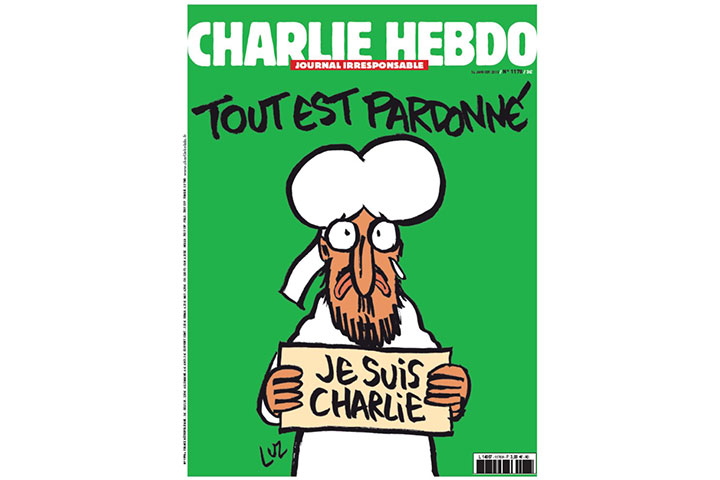The Prophet Muhammad will appear again on the cover of French satire magazine Charlie Hebdo on Wednesday, when some 3 million copies will be distributed a week after gunmen stormed its offices.

READ MORE: Charlie Hebdo attack raises questions about press freedom
The image was drawn by Charlie Hebdo cartoonist Rénald Luzier, who goes by the pen name Luz. Luzier wasn’t at the office when his coworkers were killed. It was his birthday, so he and his wife slept in late and stopped to pick up a cake on the way to the office, he told The New York Times.
“I was saved by love and gluttony,” he said on Monday.
Charlie Hebdo has published several controversial depictions of the Prophet Muhammad, angering members of the Muslim community and extremist organizations. Any depiction of the Muhammed is considered blasphemous in Islamic faith.
READ MORE: Charlie Hebdo attack prompts push to strike Canadian blasphemy law
The men who gunned down 12 people at the magazine’s office allegedly targeted the publication in retaliation for such cartoons.
What we know about the AQAP connection to the Charlie Hebdo attack
The Kouachi brothers were killed by police during a standoff at a print shop, outside Paris, on Friday, after a three-day manhunt.
- Four injured after military horses break loose, stampede in London, U.K.
- Canada refused to repatriate woman from ISIS camp because she can’t be arrested: internal memo
- Russia vetoes UN resolution to prevent nuclear arms race in space
- Why U.S. colleges are turning to police to quell pro-Palestinian student protests
AQAP also confirmed to The Associated Press on Friday that it directed the attack on Charlie Hebdo.
In 2013, AQAP listed Charlie Hebdo editor Stéphane Charbonnier as “wanted dead or alive for crimes against Islam.”
Charbonnier was among the victims of the shooting spree.
READ MORE: #JeSuisCharlie now one of the most popular hashtags in Twitter history
Two years before that, Charlie Hebdo‘s office was firebombed when it released an issue of the magazine purporting to have Muhammad as its “guest editor,” renaming the publication “Sharia Hebdo,” in reference to Islamic law.
Seventeen innocent people were killed in Paris last week. Aside from the 12 victims of Wednesday’s massacre, four people died on Friday in a hostage taking and standoff related to the manhunt for the killers, while an unarmed police officer was shot Thursday night while on patrol.
On Sunday, a reported 3.7 million people took part in marches around France — more than 1 million just in Paris — to honour the victims of the shootings and rally for unity.
PHOTOS: Newspaper front pages pay tribute to Charlie Hebdo day after Paris attack #JeSuisCharlie
*CORRECTION: An earlier version of this story referred to the Prophet Muhammed as the “founder of Islam.” The sentence should have referred to Muhammed as the “prophet of Islam.”



Comments